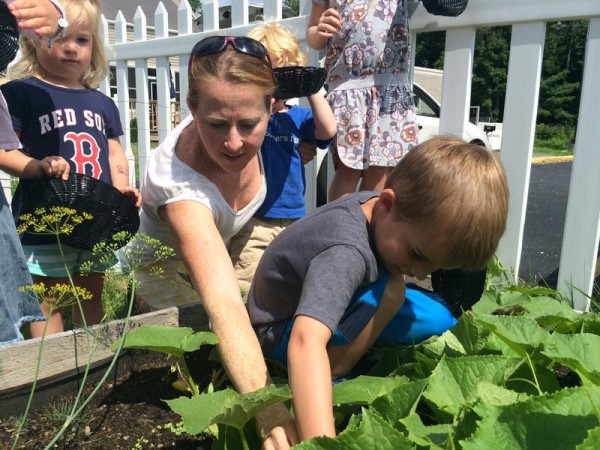Green living for kids is just as important as it is for adults. Children live what they learn and experience as they grow. Developing a respect for the environment at an early age will make a difference in your child’s future and the future of the planet.
Start Teaching Green Living Early=
As soon as your baby is born you can make green living a part of her life. By using organic toys and cloth diapers, as well as making other environmentally responsible choices, your baby can begin to develop an awareness of the earth from the very beginning.
Jill Vanderwood, author of What’s It Like, Living Green? Kids Teaching Kids, by the Way They Live, says “the future of the green movement will be led by the children, who will help adults change the way they look at things.”
In getting your young ones started in the path of environmental awareness, she says “The most important step you can take is to change just one thing. Start recycling, reusing or stop wasting water, then go from there and make another change.”
Some other ideas to consider are:
- Organic cotton clothing and bedding
- Toys and furniture made from organic cotton, sustainable sources and recycled plastics
- Low or zero VOC (Volatile Organic Compounds) paints

Green Living for Kids as They Grow
As children grow they can be more involved in the choice to live in an environmentally responsible manner. Encouraging them to choose this lifestyle is an important way to help them feel good about their choices. Discuss environmental problems with them and listen to their thoughts and ideas.
Read About Other Kids Going Green
Vanderwood’s book is full of examples of children who have been inspired to start green living projects in their community, some of which have expanded dramatically. For example, she writes of “kids like Janine Lacare who is the co-founder of Kids Saving the Rainforest, an organization she began in Costa Rica when she was only nine years old” and about “the story of Ryan Hreljac who began Ryan’s Well Foundation to bring clean water wells to poor countries around the world, with his first donation as a seven year-old.”
The book gives examples of ways schools and families can encourage children to undertake such bold efforts, but there are many tried and true green living ideas to let your child explore a more eco-friendly lifestyle. “They can learn to think about saving the planet in simple ways,” says Vanderwood, “like walking or taking their bikes instead of asking Mom or Dad for a ride, not leaving the lights and TV on, not changing their clothes so often, and using reusable water bottles.”
Grow a Garden
Give your child a small area in your vegetable garden to grow his choice of vegetables. Radishes are good when a child is very young because they grow quickly. Other easy to grow vegetables include:
- Green beans
- Snap peas
- Cherry tomatoes
Practice Recycling
Recycling is an important part of green living. Many towns have recycling programs. Talk about recycling and practice recycling at home. If your child’s school does not have a recycling program, talk to the administration about beginning one.
Another step to recycling is buying products that are made from recycled products. Look for items that are labeled as having been created from a percentage of post-consumer waste products. These items are more widely available than ever before and can include:
- School supplies
- Backpacks
- Toys
Buy Fair Trade Items
Teach your children about the Fair Trade label and what it means. It is an approach to manufacturing that guarantees workers (especially those in other countries) not only a wage that they can live on but better working conditions for them and an increased standard of living for their families. Companies that practice fair trade often sponsor medical clinics, schools and other community services.
Water Conservation
By doing simple things like turning the water off when brushing their teeth or making a rain barrel to gather rainwater for watering the plants, children can begin to understand the importance of protecting water resources.
Saving Energy
It is important for children to understand that electricity use also has an effect on the environment. By teaching them to do simple things like turning off the lights or television when they leave a room, you encourage them to respect this resource.
Another way to get children interested in saving energy is to help them build solar and wind powered projects from kits. These kits are available in a variety of types, sizes and prices at almost any toy store or Internet toy website.
Become a Wise Consumer
One of the ways to encourage green living for kids is to inspire them to be wise consumers. Buying items secondhand and selecting items that have less impact on the environment are good ways to be an eco- friendly consumer. Other ways that this can be done are:
- Purchase reusable bags
- Shop thrift shops and garage sales
- Buy organic
- Shop locally
Live Green Yourself
Green living for kids is not an overnight thing. Vanderwood says “making several small changes over a long period of time makes it easy to adjust to each change instead of reverting back to old habits.”
It is also important to take every opportunity to discuss environmental issues with your children and answer their questions. A green lifestyle is a lifetime commitment to the environment. Helping a child to make that commitment is as simple as sharing your own life with her. “Teaching kids about green living is a great way to start a change,” says Vanderwood. “After all, who wants to inherit an earth filled with waste and garbage?” [greenliving]

